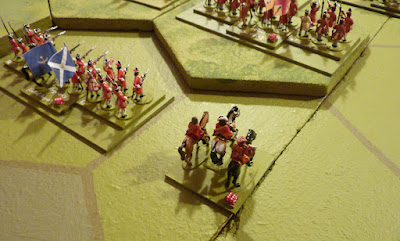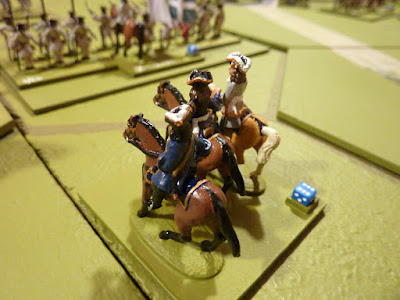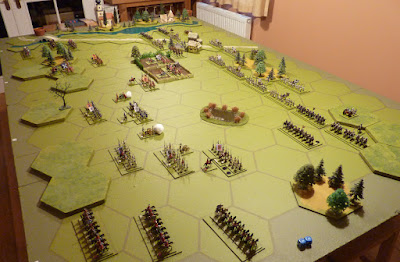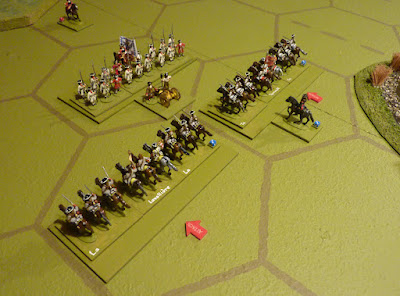Jim's Crib-Sheet
Let's start with the digression; get it over with.
Years ago, when I was gainfully employed, I worked with a very nice man named Jim.
He was an unusually intelligent fellow, perceptive, with an analytical spark verging on genius, and he was a brilliant technical writer - really exceptional. When he joined my team, I was puzzled to receive messages of sympathy from some of my colleagues.
One of his previous team-leaders told me:
"If I were to ask Jim to produce a report by lunchtime, describing exactly what was in the 3rd room on the left, down the corridor, I would have to supervise him constantly; left to himself, by the 4th day of his investigation he would have details of what was in the first 2 rooms, but would not have reached the 3rd room yet."
There were other tales along similar lines. The general impression was not that Jim was unfocused - his focus was excellent - there was a bright spotlight shining at all times, but it tended to shine on whatever he found interesting at that instant rather than what he had been asked to do. After some initial problems with him, pretty much as described, I agreed a new procedure with him, on the understanding that it would be our operational secret.
We agreed that Jim should write a short description of any new piece of work. It should set out the scope, whom he would report to, by when, and an outline of what his report would say. He would agree this with me before he started, and the "crib-sheet", as we called it, would never be longer than half a page of notepaper. This last bit was important.
Once the study work started, Jim would check his crib-sheet every morning (we eventually reduced this to every Friday morning), and, if at any point he no longer thought that the sheet described what he was doing, or thought he should be doing, he should immediately come to talk to me.
Maybe I was lucky, but this system worked well. It meant that I could rely on Jim always being busy doing something that was at least a bit like what I'd asked him for.
End of digression. If I remember, I may refer back to this later on. That was the intention...
WSS - Rules Development
I'm sure I've rambled on about this quite often in the past, and I'm certain that there have been a couple of email conversations on the topic over the last couple of months, so if you've been through all this before, please just nod and pass on.
Rules: To set a context here, a surprising amount of bookshelf space in my house is taken up by sets of wargames rules, hardly any of which I use on a regular basis. Most of them are commercially successful sets, loved and enjoyed by their adherents. I have read them all at some point. There is nothing necessarily wrong with any of these sets - it's just that they don't suit me. Something in the systems, or the game-scale, or (very frequently, as I get older) they are too laborious in action. Some of these games were written by me - I don't care for most of them, either. Similar reasons.
In each case, the arrival of new rules has invariably been an occasion for some excitement, if briefly...
WSS: I've always had a hankering to "do" 18th Century wargames. This is complicated to pin down - some or all of the following are contributors:
* Years of gazing at the blurry photos in Charles Grant, Peter Young. Somehow, little men in three-cornered hats are "proper" toy soldiers.
* The history of the period is pleasingly complicated, and all those little German principalities and electorates are very attractive. Given a few unauthorised alliances, there is also vast scope for fictitious campaigns.
* In late 2019, I was fortunate enough to get an opportunity to purchase a chunk of an existing collection, enough to get a serious WSS project off to a flying start. That turned on a lot of lights.
* The WSS somehow seems a remarkably simplified form of Horse & Musket warfare; the pikes are gone, there is no sign yet of light infantry, skirmishers, rifles, squares, horse artillery, columns of attack and most of the other things which regularly cause problems in wargames.
* Given the style and appearance of Higgins 20mm figures, this was a perfect opportunity for me to assemble armies of shiny, surrealist toy soldiers fighting a simple, logical game - I'd never adopted this kind of approach before.
* I also had my heart set on using a gridded battlefield.
So far, all good. It seems inappropriate to find any upside of lockdown, but it certainly provided opportunities to develop my armies, and, having obtained and read over the best-selling rule sets available, along with Chandler and Nosworthy and a few eye-witnesses, I also decided I would have a go at developing my own game. Apart from anything else, I would certainly learn a lot in the process.
Despite my early aim to make a classically simple game, I was prevailed upon by a number of sources to be sure to give due weight to the difficulty involved in manoeuvring the unwieldy forces of the day, and so a layer of tactical ducking and weaving was added to the shopping list.
Thus Prinz Eugen has been staggering along for 3 years now - it's general progress has consisted mostly of adding in fabulously clever ideas, to enrich the game, and then excising them because they slowed things down and caused frustration (or just didn't work...). I've been deeply grateful for the contributions of a couple of visiting generals, who helped me with testing and made very useful suggestions, and some very kind correspondents, but I still haven't had an opportunity to invite friends for a serious game. I've also had niggling concerns about some aspects - too complicated in places, major overheads to add small amounts of extra authenticity.
So for the last 2 months I've been continuing to cut yet more fat out of Eugen, but in parallel I've also been developing a sneaky Plan B. Last weekend I had the chance to do a direct comparison of how the two shape up. I am here to tell you that I'm pretty sure that Plan B is better.
The new interloper is a cut-down version of
Tricorne, Richard Borg's boardgame for the AWI. Let's be honest here - yes, it is
Commands & Colors, no less. It involves some new systems but the basic game is largely familiar.
To convert it for use in the WSS, I need to reduce the effective range of muskets, and remove all mention of rifles, light troops, highlanders and so on. The revised dice (and the heightened importance of morale which depends on these dice) work well; the Command Cards and Combat Cards need some tweaking to cater with the different theatre and the 60-year time shift, but all that is manageable.
My prototype game, then, is sort of Tricorne, but I've done a lot of re-typing of rules - at present, it is referred to here as Working Title. There are still some ideas I need to finalise, and when things are more settled I guess I'll design and print my own revised cards, but, whatever else I still have to do, I have a working beta-test game already, it works nicely, and playing it at the weekend felt like getting back into a warm bath on a cold day. Prinz Eugen has been a long-running saga, which at times has taken on a life of its own, and I can confidently say that it now works, though it might be a tricky thing to learn, and it has no capability at all for Zoom, but in my back-to-back comparison with the C&C derivative, for enjoyment, it was, to coin a phrase, knocked into a cocked hat.
I guess PE will now take its place on the bookshelf, not far from Under the Lily Banners, Twilight of the Thing They Thought of Next, Stuart Asquith's rules, and all the others. No regrets, Coyote, I've learned a lot on the free, freeway.
If I'd just set up one of Jim's crib-sheets around Xmas 2019, I'd have put a lot of stress on fast play, keeping the game as simple as possible, and cutting out unnecessary cleverness. And I'd have checked that I was on track, every week. I might even have decided, early on, to hack a WSS game out of Commands & Colors, which is what I had done with some success for the ECW. However, I'd forgotten all about Jim, and the things I used to do. Too clever for that stuff now.










































